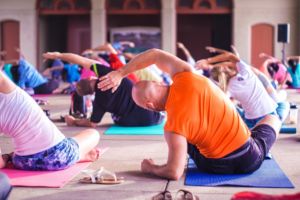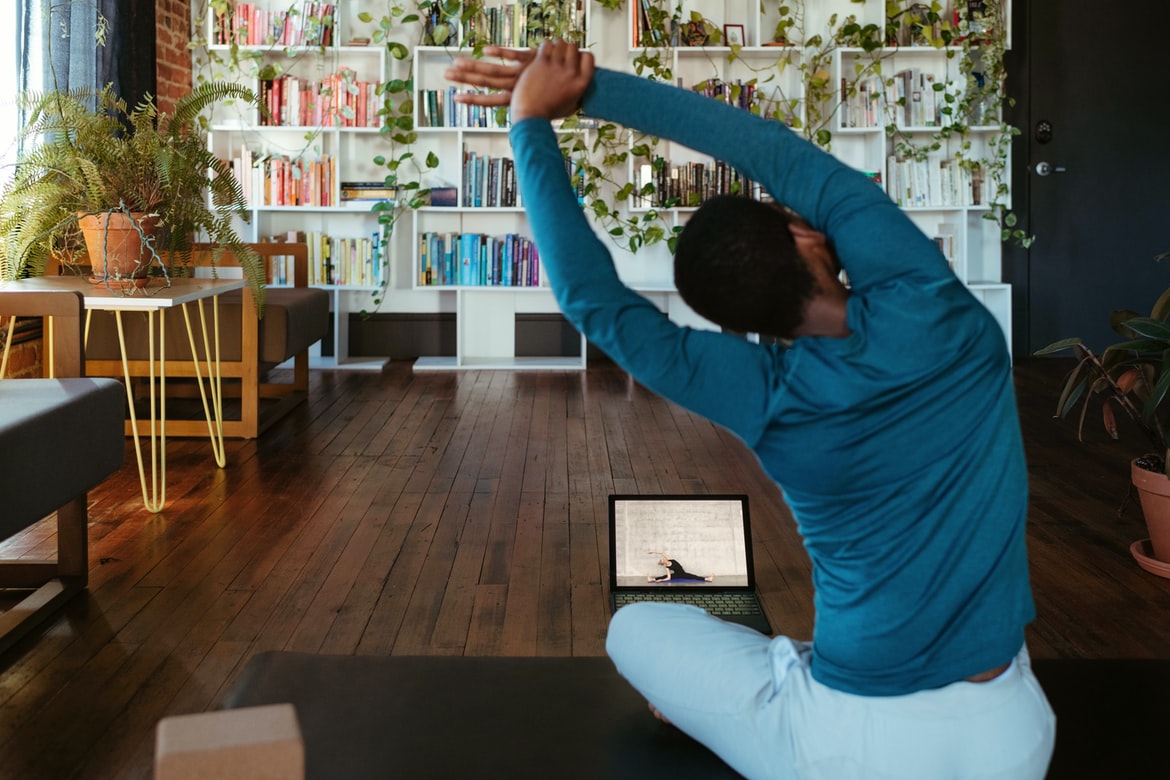If you’re a holistic Yoga teacher, you may be wondering if it’s really necessary to take a trauma informed yoga training. But until you’ve tried an entire class with only invitational language, you just can’t know how it feels. Here are a few of the beautiful reasons that trauma informed Yoga is different for students.

1. Invitational Language Feels Incredible
As I mentioned above, invitational language feels incredible in the ear, and on the mind. It’s as if, at every moment, someone is passing you the power to decide how you want to spend your next moment.

What does Invitational Language sound like?
On paper, Invitational Language sounds like a wishy-washy, wordier version of what you’re already doing. Essentially, you’re substituting an invitation for every single direction in the class.
So you’re not just offering options between Warrior 1 standing, or Warrior 1 in a chair. You’re inviting student’s to stand at the front of their mat, to step backward, to lift their arms, and so on.
Making Invitational Language Feel Natural
Learning how to continuously invite instead of tell is the most daunting part of trauma informed Yoga training. It’s also the biggest reason you should take a real training rather than just reading about it. Participating in sample classes, role plays, and teaching practice are the only way to get that weird new speaking pattern to start flowing naturally.
And trust me, it does flow naturally…eventually. And when that happens, you’ll be spoiled for regular Yoga classes evermore. Normal cueing will sound harsh and bossy.
Prioritizing “what you feel like” for an hour feels pretty amazing for anyone – not just people recovering from trauma.

2. Sensation Instead of Performance
A big part of trauma informed yoga is encouraging people to observe their bodies without judgement. In a trauma informed Yoga class, that means getting curious about sensation.
What does it feel like to lay on a mat? What’s the difference between raising your arms over your head, or letting them hang from your shoulders?
Why focus on sensation instead of alignment?
Students are so busy contemplating these micro differences in sensation that they don’t have enough bandwidth to compare themselves to others.
And teachers are so busy cueing for sensation that they don’t bother cueing the left leg back a little further, or the torso a little more twisted.
Ignoring alignment seems weird at first
But what if their left leg does need to be back a little further? Shouldn’t you tell them?
Nope. Because you’re basing that opinion on your visual observation of that student. What they look like in the pose. You have no idea what it feels like (though you may imagine you do).

3. Making Your Own Choices Feels Empowering
Another difference that feels amazing for students is the freedom not to participate.
People who have experienced trauma have had their agency stolen from them, often repeatedly. They had no choice about whether or not to participate in the traumatic event.
Trauma informed Yoga heals by celebrating the student’s right to make any choice they like.
Not Participating Counts as Participating
In some addiction and mental health settings, students might choose to lay down for a nap, read a book, or even take a cigarette break. Instead of a public shaming, the students receives smiles and nods from the teacher. The teacher might even agree that they should do whatever they feel like doing.
Teachers want students to feel comfortable enough to say, “Downward Dog isn’t my thing today; I’m going for a smoke.”
Respecting Choices Builds Trust
In my experience teaching in an addiction recovery centre, when you don’t act like you’ve been disrespected because the student wants to read a book, trust grows more quickly. Students look surprised at first, as if they were expecting a telling off. When you acknowledge that students know their needs best, they’re often more open to trying a little movement next time. Or sometimes listening to what you’re saying while “napping” or “reading a book.”
Prioritise Relationship Over Doing Asana
What if they never do Yoga and spend every class outside smoking? It doesn’t matter. The relationship matters more than the asana. You’ve still established that you’re a professional who doesn’t fall apart without compliance. And you’re showing the whole class that making different choices doesn’t count as disrespect.
3. Classes Without Hands-On Assists Feel Safer
This one is huge for a lot of students, especially those recovering from trauma.
It’s very stressful thinking that at any moment a teacher could touch you unexpectedly – even if the teacher is highly skilled and has good intentions. So when students hear at the beginning of class that the teacher will never touch them, with or without consent, it relieves a lot of anxiety.
What’s wrong with getting consent?
Some students have grown up in an environment where it was dangerous to say ‘No’ to anything. So they might consent even if they don’t really want to. They just don’t want to risk upsetting or disrespecting the teacher.
That’s why our trauma informed yoga trainings advise teachers to guarantee they will never offer hands on assists. It relieves the pressure on students to say Yes or No.
Students Like to Know Where You Are
Many students taking classes in service facilities have a high degree of vigilance and startle easily. Essentially, they’re always on guard – not the best state for dropping into your body.
In a trauma informed Yoga class, students feel safer because teachers stay on their own mat in front of the class. There’s no risk that a teacher might “sneak” up behind you when you have your eyes closed.
If teachers need to move off their mats to turn off lights or open the door for someone, they tell students where they’re going. Practices like these sound minor, but go a long way toward establishing trust.

Trauma Informed Yoga Is Different for Students and Teachers
From personal experience, I learned that a trauma informed Yoga class feels incredibly different from “regular” Yoga. And that’s even though I was already devoted to providing a holistic experience, with pranayama, meditation and a focus on feeling well rather than looking good.
Taking My Training Back to Class
After taking a trauma informed sample class during my training, I was much more aware of how unintentionally bossy cueing can sound. Invitations to move didn’t sound wishy-washy, as I’d expected. Instead they felt freeing. My focus was repeatedly directed back to my internal experience. What would I like to do with my arms in this moment? It became fun and interesting to experiment with the options.

Apply the Principles in any Setting, including Studios
If you’ve been sitting on the fence, wondering if trauma informed yoga can really be that different, I encourage you to try a training. You’ll probably find, like I did, that the principles are just as welcome in your “regular” studio classes as they are in service facilities. After all, most of us would like to feel more empowered and less self-critical.


